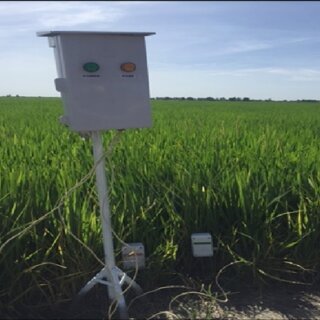Kanjanabh Kumar Das
3rd Year, B.V.Sc. & A.H. kumardaskanjanabh@gmail.com
College of Veterinary Science, Khanapara, Guwahati-22
The poultry industry in India is a booming industry. Poultry rearing has been a staple livelihood for a large section of Indian population since ancient times. This can be attributed to the excellent disease resistance capacity of our indigenous birds, which is being used now to upgrade the immunity of high producing exotic breeds by crossbreeding. With a net worth of USD $28.18 billion, it becomes highly necessary that the backbone of the poultry industry is protected from the growing incidence of emerging diseases. Antibiotics have played an important role in the growth of the industry by reducing mortalities and accounting for better welfare of birds.
THE POSITIVES:
An antibiotic, by definition, is a type of antimicrobial substance active against bacteria. There are two types of antibiotics – Bactericidal (Latin cide: kill) & Bacteriostatic (sta: set down). Antibiotics in poultry are generally administered to the entire flock and are used for the treatment of diseases (therapy), disease prevention (metaphylaxis, i.e., treatment of a group of animals without evidence of disease), and growth promotion. Some diseases in which antibiotics play an important role are colibacillosis, necrotic enteritis, salmonellosis etc.
Subtherapeutic doses of antibiotics have been found to enhance bird performance by:
- Increasing growth
- Improving Feed Efficiency (FE)
- Favorably altering intestinal bacteria
- Reducing the incidence of disease
Some commonly used antibiotics in chicken farming are oxytetracycline, chlortetracycline and doxycycline (class tetracyclines); enrofloxacin and ciprofloxacin (class fluoroquinolones) and neomycin (aminoglycoside).
It is important to know that orally dosed antibiotics do not promote growth in germ-free chicks. Although the exact mechanism by which the improvements occur is not known, it is based on the hypothesis that the presence of bacteria in the intestine reduces bird growth. The importance of antibiotics can also be reflected in the following:
- Antibiotics reduce the production of growth-depressing microbial metabolites.
- Antibiotics reduce the use of nutrients by intestinal microbes.
- Antibiotics allow for enhanced uptake of nutrients by reducing the thickness of the intestinal wall.
- Antibiotics also reduce the occurrence of subclinical infections.
One might be familiar with the fact that a prescription for antibiotics is often accompanied by the prescription of substances known as probiotics. Probiotics are live microorganisms that are intended to have health benefits when consumed. Antibiotics (anti: against, biota: life) might kill the beneficial microflora that is present in the gut. Probiotics simply help to keep their numbers up, even with the effect of antibiotics. Probiotics can also be used as an alternative to antibiotics as they may also inhibit the growth of many pathogenic bacteria. Probiotics may also have growth-promoting and immune-enhancing properties in poultry.
Prebiotics are usually composed of plant fibers that can stimulate the growth of healthy bacteria in the gut. A combination of prebiotics and probiotics (often called synbiotics) may sometimes be used. Prebiotics are physically indigestible by the birds; however, they serve as important food sources for the growth of probiotic organisms.
THE NEGATIVES:
As per some reports, “Antibiotics are being routinely administered to chickens on Indian poultry farms in small doses to promote growth and keep disease at bay, almost as a replacement for nutrition and sanitation” (Brower, 2017). Tetracyclines and fluoroquinolones, antibiotics commonly used to treat cholera, malaria, respiratory and urinary tract infections in humans, are reported to be the most commonly used antimicrobials for this purpose.
The major threat of using such high concentrations of antibiotics is the possibility of emergence of antibiotic-resistant bacteria. This is especially serious in our country, as India is the world’s biggest consumer of antibiotics for human use. These pathogens can spread from person to person in the community causing serious diseases that call for intensive care. Even hospitals and clinics might serve as hotspots for these organisms, causing a wide range of nosocomial infections. That is why careful prescribing of antibiotics in poultry and other livestock is necessary.
For instance, when we eat chicken sourced from poultry raised on growth promoters, we ingest antibiotic-resistant bacteria that were harbored within the chicken. Those bacteria can make us sick. However, they do not respond to conventionally prescribed antibiotics; so, our sickness is hard to treat or can even be untreatable. Cooking at a high temperature kills all bacteria but uncooked meat can harbor resistant bacteria.
THE HARMONY:
“Excess of everything is bad”, and the same applies to the use of antibiotics in chicken farming. They help keep chickens healthy, which in turn helps ensure availability of safe and healthy food. Judicious use of antibiotics, coupled with efficient managemental practices and sanitation are essential in containing outbreaks and maintaining a healthy flock.
Despite their importance, one could wonder whether there is any alternative to antibiotics. Although there are a few, including probiotics, prebiotics, synbiotics, organic acids, immunostimulants, bacteriophages, antimicrobial peptides and phytogenics (herbs, botanicals, essential oils, and oleoresins), their effectiveness is highly debatable compared to the highly efficient antibiotics.
Some measures that can be undertaken to ameliorate the problems related to antibiotic use are as follows:
- Setting up an Organic Poultry Farm: An organic poultry farm limits itself in terms of unit size and stocking density and avoids intensive housing This reduces the spread of diseases among the flock. Preference of alternative therapy may also reduce antibiotic concentrations in the flock. Thus, there are less chances of residual effects of drugs on animal products.
- Raising Awareness among farmers and consumers: Educating farmers about when to use antibiotics, the demerits of antibiotic abuse and misuse, diseases and potential outbreaks will greatly benefit the industry as well as ensure quality of the products that will meet the safety standards. A veterinarian’s prescription is essential while using an antibiotic in animals and birds.
- Better Management Practices: Sanitation and balanced nutrition are obligatory for a healthy Managers can work on preventing diseases by efficient disposal of carcasses and wastes, strengthening biosecurity measures, and timely vaccination of the birds. Moreover, disinfection (fumigation) of the shed is necessary before flock replacement.
- Choosing Genetically Superior Birds: Latest developments in the area of transgenics and genome editing have led to the creation of genetically-engineered birds, which are resistant to many diseases easily contracted by conventional poultry. Such birds do not require much prophylactic antibiotics, while not compromising on production
- Intervention by the Policymakers: In recent years, the issue of antibiotic resistance has gained much attention among the people with the announcement of a National Action Plan – setting up of a basic surveillance system, intersectoral cooperation initiatives and public awareness campaigns supported by official health agencies and civil society The Indian Government has passed several laws restricting the use of antibiotics in livestock farming. The Health Ministry has also banned the use of certain drugs in the past (e.g.: Colistin), which could amplify the growing problem of antimicrobial resistance. In addition to these, researchers around the world are studying further substitutes for antibiotics, as well as their mechanisms of action. In just a span of half a decade, India is holding the global rankings of 3rd in egg and 5th in chicken meat production. The avenues of scientific research in this field are immense. While antibiotic resistance is a complex issue, the reasons why they are necessary as a vital part of modern agriculture are simple, straightforward, and guided by the belief that they must always be used responsibly.
References:
Applegate, T.J.; Klose, V.; Steiner, T. and Schatzmayr, G. (2010). Probiotics and phytogenics for poultry: Myth or reality. The Journal of Applied Poultry Research. Journal of Applied Poultry Research, 19(2): 194-210.
Brower, C.H.: Mandal, S.; Hayer, S.; Sran, M.; Zehra, A.; Patel, S.J.; Kaur, R.; Chatterjee, L.; Mishra, M.; Das, B.R.; Singh, P.; Singh, R.; Gill, J.P.S. and Laxminarayan, R. (2017). The Prevalence of Extended-Spectrum Beta-Lactamase-Producing Multidrug-Resistant Escherichia coli in Poultry Chickens and Variation According to Farming Practices in Punjab, India. Environmental Health Perspective. 125(7): 077015. doi:10.1289/EHP292.
Roth, N.; Käsbohrer, A.; Mayrhofer, S.; Zitz, U.; Hofacre, C. and Domig, K.J. (2019). The application of antibiotics in broiler production and the resulting antibiotic resistance in Escherichia coli: A global overview. Poult. Sci. 98(4):1791-1804. doi:10.3382/ps/pey539.




